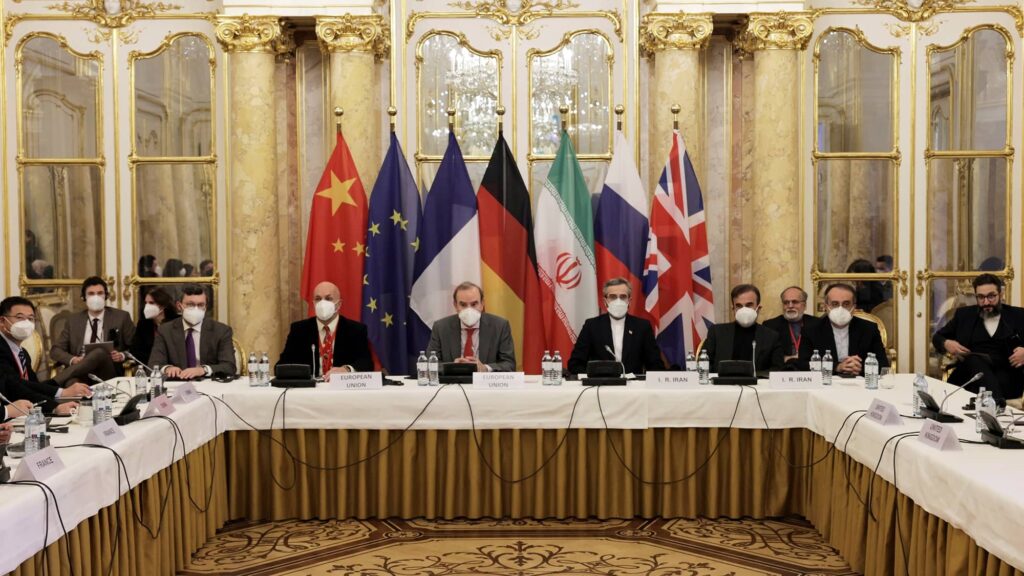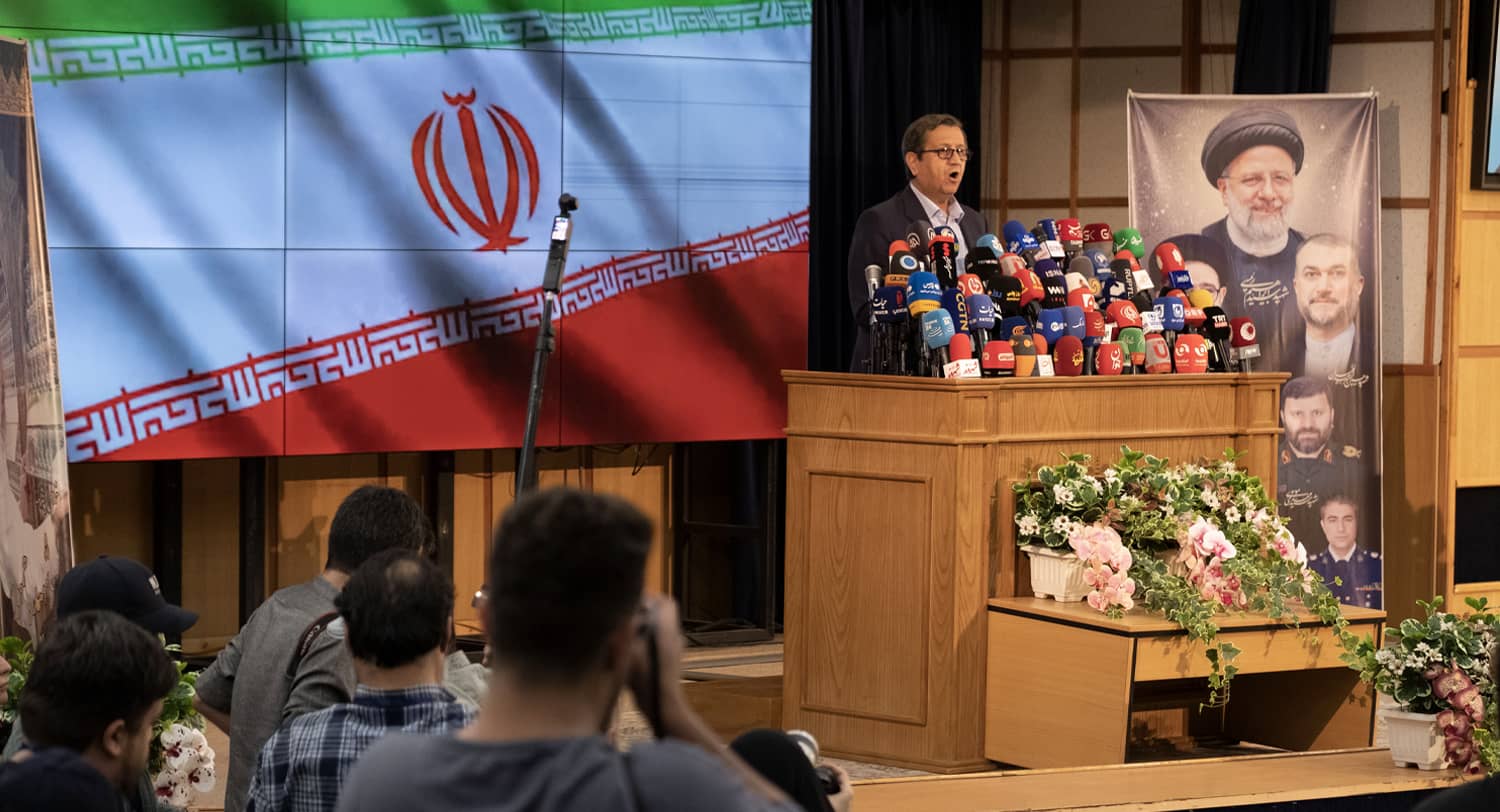In July 2015, much of the world exhaled with the announcement that a nuclear deal had been struck among the United States, its partners, and Iran. Although the terms of the deal known as the Joint Comprehensive Plan of Action (JCPOA) were — and remain — contentious, for many, the deal denied Iran the ability to acquire nuclear weapons for at least 10 years, when key restrictions would expire. Likewise, for many (including the author), the deal vindicated the use of sanctions to create leverage in support of diplomacy.
Sanctions – and especially the use of so-called “secondary” sanctions by the Obama administration on other countries and firms doing business with Iran – had put Iran in a position where it had to make serious concessions on its nuclear program.
The Trump administration said the JCPOA would not prevent Iran from ultimately acquiring nuclear weapons and that it failed to address either Iran’s ballistic missile program or its terrorist activities in the region. It withdrew from the JCPOA in May 2018, seeking to negotiate a better deal with the Iranians and, over the following 2.5 years, applying “maximum pressure” in hopes of doing so. This effort failed to secure a deal. In 2021, the Biden Administration sought to return the United States to the JCPOA. That effort too has failed.
One result of these developments has been a rejuvenated interest in the use of sanctions and a call to expand and intensify their use. However, such interest understates the difficulty of mounting a similar sanctions campaign today and the very different circumstances that would face its enforcers.
Looking at a Duck Underwater
Contrary to some impressions, sanctions are hard to design, monitor and implement, and their associated campaigns consume massive amounts of time and energy. They may appear as smooth as a duck gliding on water, but underneath there is fierce paddling.
The Iran campaign that culminated in the JCPOA in 2015 began in earnest in 2005, with the Bush administration’s Executive Order 13382 and its targeted sanctions on Iranian, Syrian and North Korean entities and individuals involved in weapons-of-mass-destruction programs. This Executive Order was succeeded over the next ten years by at least four pieces of legislation, more than six executive orders, and four UN Security Council resolutions. Each document identified new targets for sanctions, including individuals, entities, and industries that would be subject to various restrictions and prohibitions. This history is described in more detail in The Art of Sanctions, which also outlines the way in which these sanctions were implemented and the work that went into making sanctions effective.
The really troublesome part was the enforcement of sanctions themselves. Sanctions may be self-executing in theory, but that’s not what happens in reality. Iran will not respect a prohibition on its import of missile parts, for example, nor will companies, shippers and banks do so automatically. These entities have to be informed of the prohibition and what’s required of them. When they break the rules, they have to be investigated and subjected to consequences. Compliance departments may grow more capable of spotting Iranian tricks and companies more responsive to sanctions requirements, but this takes time and constant vigilance on the part of sanctioners.
Mindful of the complexity of enforcement, the United States started in 2006 to underscore to governments, companies, banks and service providers the risks of looking the other way (or, in some cases, actively hiding their involvement with Iran). The United States threatened to impose sanctions on those who provided “material support” to Iranian bad actors. Eventually the US made those threats meaningful through a structure of “secondary sanctions” whereby any business with designated Iranian actors would run the risk of banks (and eventually companies) being cut off from the United States. (They were “secondary” because they are concerned with the activities of non-US persons, as opposed to primary sanctions that focus on US persons.) Massive fines levied against banks enhanced this threat.
To make this all work, the United States engaged in a broad, single-minded campaign involving all layers of the US government, from the President to an economic officer serving in U.S. embassies abroad. Iran sanctions enforcement matters were discussed at the senior-most levels of the government almost constantly and at a level of detail that went far beyond the routine. The United States prioritized the issue of sanctions enforcement at the UN, in other multilateral bodies such as the Financial Action Task Force, and in its diplomatic engagement around the world for years. The United States leveraged its economy heavily in the endeavor, especially its banking system, and was prepared to put at risk US economic recovery after the Great Recession to target Iran’s export of oil even before the advent of the shale oil revolution.
All of these steps were done for the first time in many respects, with innovative approaches and targeting that took Iran by surprise. The United States added new industries to its target list regularly, rendering most legitimate Iranian commerce sanctionable by mid-2013 with profound implications for the broader economy.

Harder Than It Seems
As this litany makes clear, the Iran sanctions campaign that culminated in the JCPOA was immense and difficult to engineer. It would be extraordinarily difficult to do it again, especially now that Iran and other adversaries are far more aware of their exposures and risks. This time the Iranians would respond to protect themselves and their assets more effectively. To some extent, the Trump administration’s “maximum pressure” approach bears this out. It had significant economic impacts on Iran but didn’t result in a new nuclear deal by the time Trump left office.
Former Trump administration officials have argued that, if given more time, success would have been achieved, and have cited significant deterioration in Iran’s economic position as proof. It is counterfactual whether or not that would be true. Under the Biden administration, enforcement has not been as vigorous as would be the case under a full sanctions campaign to be sure, and a good faith debate could be had on the wisdom of current policy. Still, none of the sanctions have technically been relaxed, and the Iranian economy remains in poor health both anecdotally and empirically. (See, for example, IMF figures on Iran’s high inflation rate and low amounts of Central Bank reserves as expressed in months of imports.) But this overall poor performance has not led Iran to collapse nor to accept the terms of a deal that was apparently on the table in August 2022, underscoring the difficulty of linking economic pressure to strategy.
Iran’s own response leverage is also different than it used to be. Today, Iran has thousands of operational centrifuges and the apparent wherewithal to produce weapons-usable materials in a matter of days, the result of an expansion begun in 2018.
The global context also matters. The Iran sanctions campaign of the Obama administration was conducted, for most of its time, as the sole sanctions campaign of any global economic significance. This was a time before Russia invaded Ukraine, before sanctions were imposed on Venezuela, and before strategic economic competition with China. Any reprised sanctions campaign against Iran would have to take place within this context of multiple sanctions regimes and the demands already in place for these other priorities.
Moreover, such a sanctions campaign would have to answer a question from our allies and partners: to what end? In 2010, the United States was able to articulate a clear vision for the outcome it sought: a diplomatic outcome to the Iranian nuclear problem. The packages offered to Iran by the United States and its partners in 2006 and 2008 described a vision for this outcome, including that their intent was “to treat Iran ‘s nuclear programme in the same manner as that of any Non-nuclear Weapon State Party to the NPT [Non-Proliferation Treaty] once international confidence in the exclusively peaceful nature of Iran ‘s nuclear programme is restored.”
Pushing intensified sanctions today would be burdened by the fact that there was a deal in place as of 2015 that the vast majority of the international community accepted, though the US deemed it insufficient. Renewing arguments about its insufficiencies may not be persuasive to much of the world, which does not feel directly threatened by Iran’s nuclear program. An international sanctions campaign needs international cooperation in order to work.
Find the Right Role for Sanctions
This is not to say that sanctions have no use against Iran today nor that they will not play a role in any administration’s future foreign policy toward Iran. But their role has to be built on a realistic understanding of how much leverage they can provide, where Iran will slot in as part of the overall sanctions priorities of the United States, and how the rest of the world will respond to their implementation. Hard work is needed to design and implement specific sanctions in support of specific policy goals.

